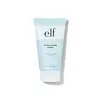What's inside
What's inside
 Key Ingredients
Key Ingredients

 Benefits
Benefits

 Concerns
Concerns

 Ingredients Side-by-side
Ingredients Side-by-side

Water
Skin ConditioningEthylhexyl Palmitate
EmollientGlycerin
HumectantAluminum Starch Octenylsuccinate
AbsorbentMagnesium Aluminometasilicate
AbsorbentButylene Glycol
HumectantGlyceryl Stearate
EmollientPEG-100 Stearate
Polysorbate 60
EmulsifyingCetearyl Alcohol
EmollientStearic Acid
CleansingJuglans Regia Shell Powder
AbrasiveSorbitan Stearate
EmulsifyingCocamidopropyl Betaine
CleansingTocopheryl Acetate
AntioxidantXanthan Gum
EmulsifyingDisodium EDTA
Sodium Chloride
MaskingTriethanolamine
BufferingPrunus Armeniaca Fruit Extract
Skin ConditioningPhenoxyethanol
PreservativeCaprylyl Glycol
EmollientParfum
MaskingWater, Ethylhexyl Palmitate, Glycerin, Aluminum Starch Octenylsuccinate, Magnesium Aluminometasilicate, Butylene Glycol, Glyceryl Stearate, PEG-100 Stearate, Polysorbate 60, Cetearyl Alcohol, Stearic Acid, Juglans Regia Shell Powder, Sorbitan Stearate, Cocamidopropyl Betaine, Tocopheryl Acetate, Xanthan Gum, Disodium EDTA, Sodium Chloride, Triethanolamine, Prunus Armeniaca Fruit Extract, Phenoxyethanol, Caprylyl Glycol, Parfum
Water
Skin ConditioningHydrated Silica
AbrasivePropylene Glycol
HumectantGlycerin
HumectantCocamidopropyl Betaine
CleansingSodium Laureth Sulfate
CleansingTriethanolamine
BufferingCarbomer
Emulsion StabilisingPhenoxyethanol
PreservativeSodium Chloride
MaskingSodium Benzoate
MaskingChlorphenesin
AntimicrobialDisodium EDTA
Aloe Barbadensis Leaf Juice Powder
Skin ConditioningTocopheryl Acetate
AntioxidantIngredients Explained
These ingredients are found in both products.
Ingredients higher up in an ingredient list are typically present in a larger amount.
Cocamidopropyl Betaine is a fatty acid created by mixing similar compounds in coconut oil and dimethylaminopropylamine, a compound with two amino groups.
This ingredient is a surfactant and cleanser. It helps gather the dirt, pollutants, and other impurities in your skin to be washed away. It also helps thicken a product and make the texture more creamy.
Being created from coconut oil means Cocamidopropyl Betaine is hydrating for the skin.
While Cocamidopropyl Betaine was believed to be an allergen, a study from 2012 disproved this. It found two compounds in unpure Cocamidopropyl Betaine to be the irritants: aminoamide and 3-dimethylaminopropylamine. High-grade and pure Cocamidopropyl Betaine did not induce allergic reactions during this study.
Learn more about Cocamidopropyl BetaineDisodium EDTA plays a role in making products more stable by aiding other preservatives.
It is a chelating agent, meaning it neutralizes metal ions that may be found in a product.
Disodium EDTA is a salt of edetic acid and is found to be safe in cosmetic ingredients.
Learn more about Disodium EDTAGlycerin is already naturally found in your skin. It helps moisturize and protect your skin.
A study from 2016 found glycerin to be more effective as a humectant than AHAs and hyaluronic acid.
As a humectant, it helps the skin stay hydrated by pulling moisture to your skin. The low molecular weight of glycerin allows it to pull moisture into the deeper layers of your skin.
Hydrated skin improves your skin barrier; Your skin barrier helps protect against irritants and bacteria.
Glycerin has also been found to have antimicrobial and antiviral properties. Due to these properties, glycerin is often used in wound and burn treatments.
In cosmetics, glycerin is usually derived from plants such as soybean or palm. However, it can also be sourced from animals, such as tallow or animal fat.
This ingredient is organic, colorless, odorless, and non-toxic.
Glycerin is the name for this ingredient in American English. British English uses Glycerol/Glycerine.
Learn more about GlycerinPhenoxyethanol is a preservative that has germicide, antimicrobial, and aromatic properties. Studies show that phenoxyethanol can prevent microbial growth. By itself, it has a scent that is similar to that of a rose.
It's often used in formulations along with Caprylyl Glycol to preserve the shelf life of products.
Chances are, you eat sodium chloride every day. Sodium Chloride is also known as table salt.
This ingredient has many purposes in skincare: thickener, emulsifier, and exfoliator.
You'll most likely find this ingredient in cleansers where it is used to create a gel-like texture. As an emulsifier, it also prevents ingredients from separating.
There is much debate on whether this ingredient is comedogenic. The short answer - comedogenic ratings don't tell the whole story. Learn more about comegodenic ratings here.
The concensus about this ingredient causing acne seems to be divided. Research is needed to understand if this ingredient does cause acne.
Scrubs may use salt as the primary exfoliating ingredient.
Learn more about Sodium ChlorideTocopheryl Acetate is AKA Vitamin E. It is an antioxidant and protects your skin from free radicals. Free radicals damage the skin by breaking down collagen.
One study found using Tocopheryl Acetate with Vitamin C decreased the number of sunburned cells.
Tocopheryl Acetate is commonly found in both skincare and dietary supplements.
Learn more about Tocopheryl AcetateTriethanolamine is an emulsifier and pH adjuster. It is created using ethylene oxide and ammonia. This gives Triethanolamine a nitrogen core and a similar scent to ammonia.
As an emulsifier, it prevents ingredients from separating and enhances texture by adding volume to a product.
PH adjusters are common in cosmetic products. The pH of a product can affect the effectiveness of other ingredients. A product with a high pH may also irritate the skin.
Learn more about TriethanolamineWater. It's the most common cosmetic ingredient of all. You'll usually see it at the top of ingredient lists, meaning that it makes up the largest part of the product.
So why is it so popular? Water most often acts as a solvent - this means that it helps dissolve other ingredients into the formulation.
You'll also recognize water as that liquid we all need to stay alive. If you see this, drink a glass of water. Stay hydrated!
Learn more about Water